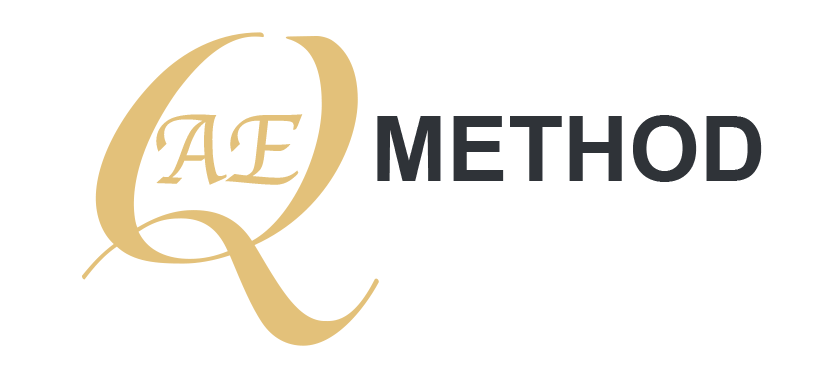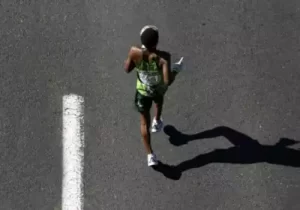When looking for a reason for lack of motivation to run, it is necessary to understand the role of the invested-received relationship, which is implanted deep within our limbic system.
The relationship between what you invested and received defines an action or decision’s effectiveness and determines our relationship to the outcome. In the past and the development of the human species, a high enough efficiency was necessary to make it possible to survive. Evolution and entropy erase inefficient systems and elevate more efficient ones. The effectiveness of movement was key to survival. Therefore, more effective movement is felt as pleasant and good, while the inefficient movement is felt as uncomfortable and painful. As a child grows up, he learns to be tidy and thus improves his efficiency. When he is effective enough to cope with current demands and burdens, curiosity drives him forward.
Efficiency is the foundation for life without pain and allows us a more efficient elimination of entropy. By observing and improving our efficiency, we create the conditions for life, growth, and joy.
You will begin to respect the importance of learning, which will have an impact on greater tidiness, complexity, and efficiency while at the same time reducing dependence on unnecessary technologies. You will begin to run diligently and with care. That way, we preserve our personal freedom, wishes, goals and train the abilities that will help us achieve what we desire. At the same time, we are aware of both the rights and the obligations arising from this. Superficial and careless running will quickly be punished with a poor result and unwanted pain or injury. Same as with any work.
That is why I emphasize increasing the orderliness, complexity, and efficiency of movements and raising the clarity of communication within us when performing AEQ exercises. Through the exercises, we gradually regain the already lost abilities; we improve them with less effort but with more feeling, knowledge, and curiosity. Let’s transfer this mentality to other areas of our lives as well; so that we will become better, wiser, and more efficient over the years and gain control over entropy. Simultaneously, the exercises reward conscientiousness and responsibility while punishing chaos, exaggeration, and ignoring the body’s real state.
Running moves and efficiency
Being efficient makes us feel good and puts us in a good mood. A good balance between how much we invested and what we received is felt as pleasurable, which we enjoy. A bad relationship makes us feel angry, disappointed and causes fear and anxiety and tensions and pain. AEQ exercises and a practical understanding of the action/reaction relationship improve the relationship between effort and movement, improve the proper shortening and relaxation of muscles in movement, and improve behavior, feeling, and understanding of what we are doing. Only then do we understand our well-being and can decide what to change to improve the relationship; each movement also helps us feel it. Running will be easier and better. It will make us feel better afterward, too. These are all signs that we have improved efficiency and reduced effort. Accordingly, our desire to run will grow, and running will no longer result from a strong enough will or determination. Dependence on a strong will clearly indicate the ineffectiveness of what we are doing; as we make up for the lack of inner joy of life and desire for life, a more effective movement creates with a strong will.
Understanding and using the connections in practice are of key importance for constant progress in life. The AEQ method enhances thinking skills, allowing us to adapt new information for home use, work, and running. In the desire for positive results, we need to adapt this information to our lives creatively. However, this is only possible with a good connection between body and mind.
Creative adaptability can be seen as a game. It is actually playful, yet it requires a style of thinking that is both logical and consistent as well as intuitive and deeply personal – in short, it is a holistic-brain thought process for successful problem-solving.
When there is a lack of connection, there is a discussion about problems, which can be negative. Questions like, “What’s wrong?”, “Who messed everything up?”, “Why is this happening to me?”, “Who’s to blame?” all deal with what’s wrong. They deplete your strength and creativity, and at the same time, create a feeling of anxiety, which is all too often a motive for running. To relax – from yourself, from inner tension, emptiness.
Thinking about the outcome is positive. It is the opposite of thinking about a problem that leads in the right direction and does not allow drowning in negative thoughts. When thinking about the goal, we ask ourselves, “What do we have under our control?”, “What can we do?” “What will move us?”, “What is motivating us?”, “How can we change the situation?”. Targeted thinking turns energy-pumping problems into energy-filling goals.
Let’s think about the solution more than the problem. Let’s imagine what the feeling of living in our solution would be like. This way of thinking creates a tension between the problem and the solution, which by nature tends to resolve itself in a positive direction.
If we have a problem finding the motivation to run, the best solution is to check the running-related motives, emotions, and well-being. Let’s change our attitude towards ourselves and running. Too much suffering and stubbornness, too little pleasure, lightness, and softness indicate inefficiency. This body punishes you by giving up obedience and a willingness to obey orders from the head.
Aleš Ernst, author of the AEQ method and AEQ breathing






